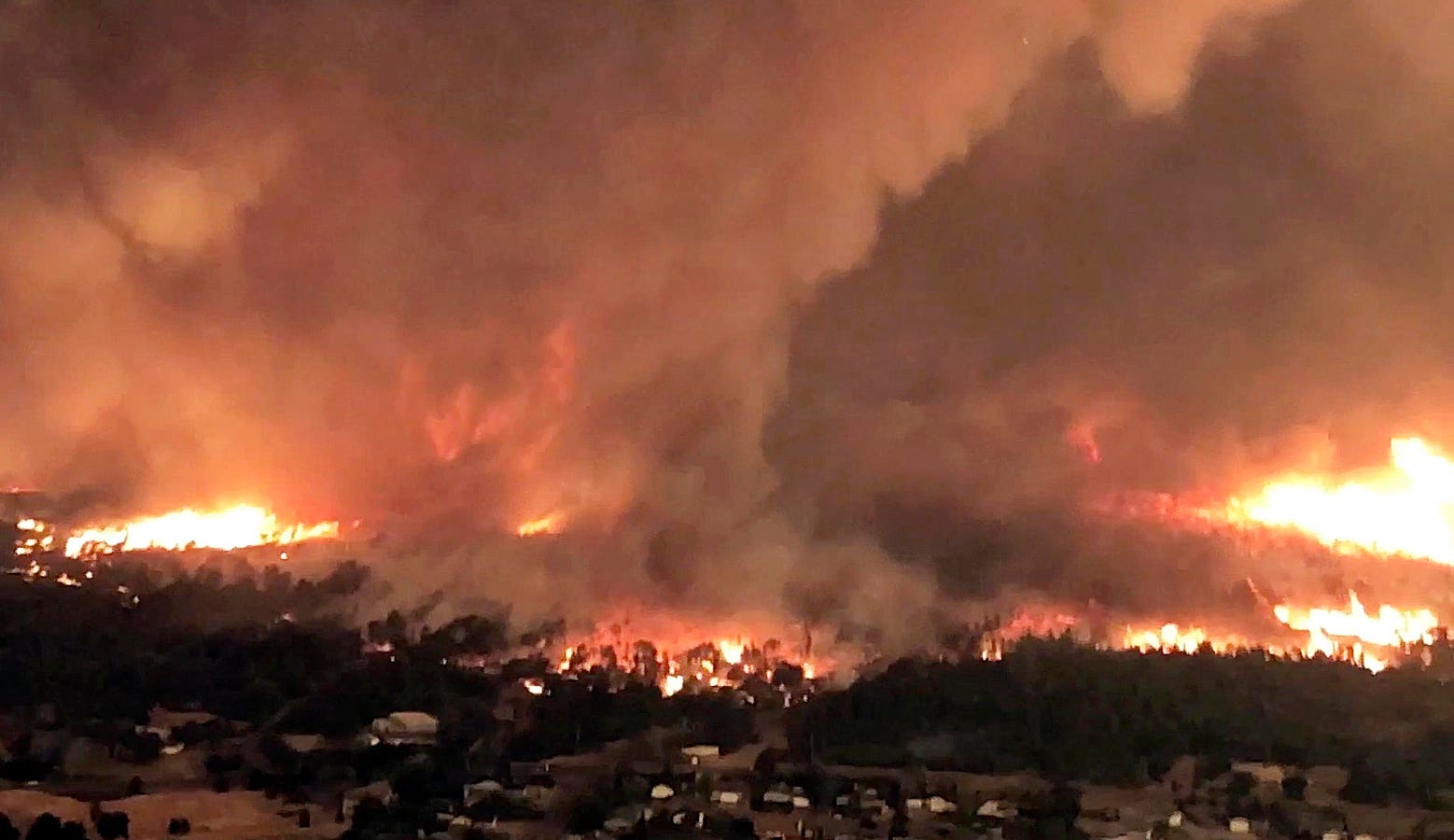FILE – This July 26, 2018 file image taken from video released by Cal Fire shows a fire tornado over … More
This week stunning footage of a fire-induced tornado in Utah is making its way around social media. Some posts claim the apocalypse. Others are saying that it is some type of AI-generated video. After seeing the footage, it is certainly one of the most impressive videos this meteorologist has seen, but it’s definitely real.
The vortex observed on July 12 was associated with the Deer Creek Fire burning in southeastern Utah. Footage was shared by the Bureau of Land Management and spread like, well, wildfire. There is no actual technical term called “firenado,” but people and media often use the terminology. The U.S. Forest Service Glossary defined a fire whirl as, “A Spinning vortex column of ascending hot air and gases rising from a fire and carrying aloft smoke, debris, and flame. Fire whirls range in size from less than one foot to more than 500 feet in diameter.” While larger fire whirls can be as strong as a weak tornado, I think this was something slightly different if we are being consistent with scientific literature.
My initial assessment is that it was a “pyrotornado.” In 2020, I wrote, “Pyrotornadoes form from pyrocumulonimbus clouds by taking pre-existing spin (vorticity) at the surface and stretching it upward through a combination of strong upward motion (updraft) and intense latent heat release (energy associated with phase changes of water vapor to cloud water).” According to a 2018 study published in Geophysical Research Letters that process might be different than those associated with fire swirls or whirls, which are derived from processed related to the fire. While all of these are often referred to as fire tornadoes or firenadoes, researchers have detected subtle differences in how they are organized.
This Saturday, July 8, 2017, photo provided by the Santa Barbara County Fire Department shows a … More
Pyrotornadoes are also distinct from tornadoes on the Great Plains, which are associated with a rotating cloud system called a supercell. According to the Royal Meteorological Society MetMatters, A pyrocumulonimbus clouds or “cumulonimbus flammagenitus” are, “Thunder clouds created by intense heat from the Earth’s surface. They are formed similarly to cumulonimbus clouds, but the intense heat that results in the vigorous updraft comes from fire, either large wildfires or volcanic eruptions.”
CANBERRA, AUSTRALIA – JANUARY 31: A pyrocumulonimbus cloud is generated by the intense Orroral … More









